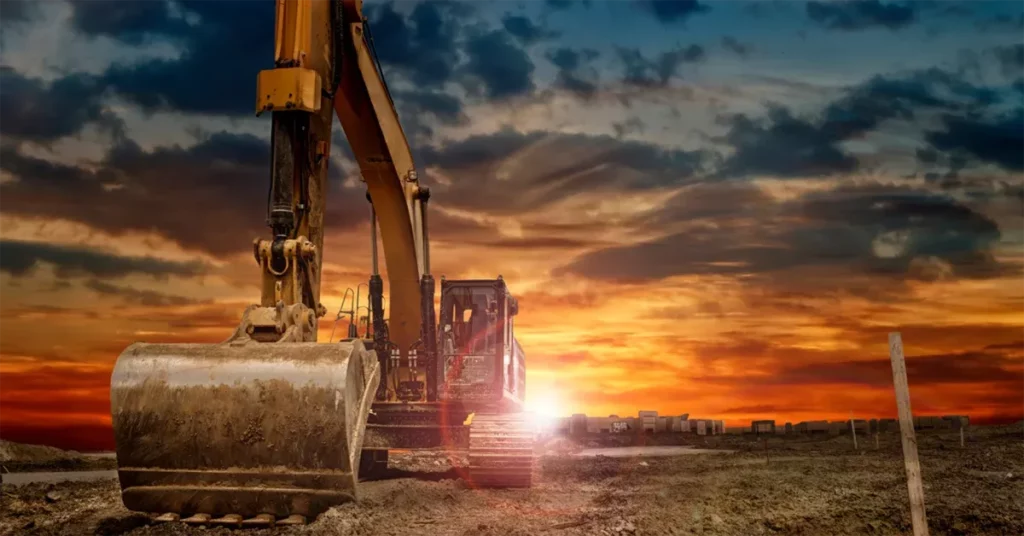In construction, it’s not just the work that needs a complete schedule of its stages, but also the maintenance of the equipment.
Having control over scheduled downtimes and avoiding unexpected and costly failures is fundamental to saving money and securing deadlines. After all, vehicles, excavators and other categories of well-maintained machinery and equipment minimize repair costs and downtime, and increase the useful life of systems, as parts are checked regularly.
Disadvantages of not planning maintenance
Some of these are: a drop in productivity, a reduction in the quality of the service, a delay or increase in delivery times, higher costs and a high risk of accidents, to name but a few.
With regard to the last item, according to information from ANAMT, the construction industry is one of the sectors with the most accidents at work in Brazil, and the first in the country in terms of permanent incapacity, therefore the second in terms of deaths and the fifth in terms of absences of more than 15 days.
In the event of negligence on the part of the employer, there is the possibility of paying compensation to the INSS or even facing criminal charges for bodily injury or manslaughter, depending on the situation.
From a financial point of view, for example, sick leave is equivalent to 9% of the annual payroll budget. In view of the use of heavy machinery to carry out a construction project, it should also be remembered that lack of maintenance or even improper operation can lead to accidents.
Maintenance planning
In order to carry out equipment maintenance, detailed planning is required. Without this schedule, you won’t know which equipment is in working order and which needs inspection or repair.
So create a plan that includes predictive and preventive maintenance to avoid future problems. With a detailed timetable, you can avoid strain on the team and also financial losses caused by a lack of organization. Not to mention that the number of accidents also drops.
Fleets
What to check weekly:
- Lubricating oil level
- Windshield washer fluid level
- Engine coolant level
- Condition of the tires, from appearance to gauge
- The external condition of the vehicle, such as the windshield, fairing and possible fluid leak marks.
Monthly:
Check:
- Brake fluids
- Transmission and power steering,
- Hoses, battery cables and belt and body cleaning.
Every six months (or according to recommended mileage):
- Tire rotation, balancing and alignment
- Brakes
- Clutch system if the vehicle is manual
- Transmission check
- Changing the fluid and filters
- Inspection of spark plugs and their cables
Annually:
- Check radiator, water pump, fan belt, radiator cap
- Lubrication of locks, hinges and parking brakes.
Important: These tips vary according to each piece of equipment and manufacturer. If in doubt, check
for the warranty and user manuals.
In addition, actions such as: storing materials in dry and covered environments, avoiding or
removing rust, and cleaning equipment periodically, are preventative measures to
possible contamination and wear.
Equipment
Most planned maintenance periods comply with the equipment manuals, but there are some general tips on maintenance and scheduling.
One of them, just to give an example, is to look at the physical aspects of the construction site and how this might affect the machines. The wear and tear of the systems will differ, for example, in places with more acidic or saline soils. And maintenance also follows these peculiarities when it comes to planning inspections and what to evaluate.
Another option as part of your maintenance strategy is to invest in monitoring equipment or predictive analytics to regularly check your machine. You can use previous maintenance reports to correct and trend the behavior of each machine and correct problems before they get worse.
Predictive maintenance – Oil and fluid analysis
This type of maintenance anticipates the need for maintenance services before the problem occurs or worsens, avoids unnecessary downtime or dismantling and increases equipment availability.
To do this, fluid samples from each piece of equipment will be taken periodically and will show signs of wear or changes that could lead to a bigger and more expensive problem.
In this case, part of the inspection is the collection of samples over a sufficient period of time to guarantee the trend and detect the variations that occur during the operation.
How to start?
When you have no knowledge of the machine’s behavior but have a preventive maintenance plan, the ideal is to collect data halfway through the preventive period and at the time of maintenance.
Example: an engine whose preventive service, for example, is scheduled every 250 hours will be collected at 125 hours and 250 hours. With the results of the 125 hours, it is possible to carry out this intervention and programming at the time of the planned 250-hour shutdown (even if it is only a small inspection).
If there is no maintenance plan and no indication in the machine manufacturer’s or fluid manufacturer’s manual, the ideal, for example, is to carry out monthly collections on stationary equipment; collections every 250 hours (or 1,500 km) on engines; and collections every 500 hours (or
3,000 km) on other fluids.
We can certainly conclude that carrying out regular maintenance can make all the difference to the productivity of your machines, optimizing your production chain and reducing your company’s costs in the construction industry.
